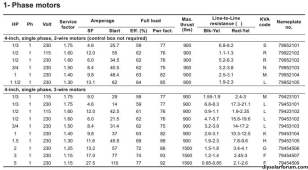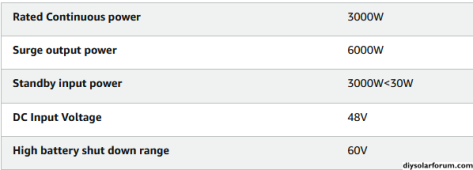At the source of the power for the well pump I would like to have 120 v available also.
What is the best way or ways I can achieve this. I have looked at inverters that put out 240v and converting to 120v or starting with 120v inverters and converting to 240v.
The well pump runs at 8 A with a start up at 13 A
Thoughts and suggestions are appreciated
Thanks
What is the best way or ways I can achieve this. I have looked at inverters that put out 240v and converting to 120v or starting with 120v inverters and converting to 240v.
The well pump runs at 8 A with a start up at 13 A
Thoughts and suggestions are appreciated
Thanks




